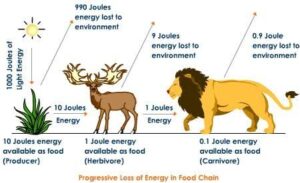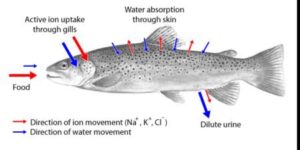Back to: ZOOLOGY 400 Level
Welcome to class!
Hello there, my smart friend! I hope you’re feeling good and ready to learn something truly fascinating. Whether you’re reading this from your hostel, your family house in Jos, or your study corner in Port Harcourt, I want you to know—this moment is yours. You’re doing something powerful by investing in your mind, and I’m proud to be your learning partner today.
Homeostasis And Feedback Mechanisms
Let’s talk about Homeostasis and Feedback Mechanisms. I know the words might look a bit scientific at first glance, but don’t worry—we’ll break it down together, just like gist between friends. By the end of this lesson, you’ll see how this topic connects to things you experience every single day.

What is Homeostasis?
Homeostasis simply means balance. It’s the body’s way of keeping everything stable and just right, no matter what’s going on outside. Imagine you’re outside under the hot Nigerian sun in Abuja—your body begins to sweat. That sweating is your body’s way of cooling down and keeping your internal temperature stable. That’s homeostasis in action.
In animals and humans, the body controls things like temperature, water level, blood sugar, and salt balance to keep everything running smoothly. Without homeostasis, even a small change—like losing too much water or having too much sugar in the blood—could make you very sick.
Why is Homeostasis Important?
Think of your body like a generator. If the oil, water, or fuel levels go too high or too low, the generator won’t work properly—or might even spoil. The same goes for your body. Homeostasis helps your cells and organs function well, no matter what the environment throws at you.
Feedback Mechanisms
Now, how does your body know when something is wrong? And how does it fix it? This is where feedback mechanisms come in.
There are two major types:
Negative Feedback – This is the most common type. It works like a thermostat in your fridge or AC. When your body detects a change, it responds by reversing that change to bring things back to normal.
For example, if your blood sugar gets too high after eating rice, your pancreas releases insulin to bring the sugar level back down. When the sugar is normal again, the insulin reduces. That’s negative feedback.

Positive Feedback – This is used less often and works by increasing the change until a goal is reached. A good example is childbirth. When a woman is in labour, the body releases a hormone called oxytocin to make the uterus contract. The more it contracts, the more oxytocin is released—until the baby is born.
Everyday Nigerian Example
Let’s say you’re preparing hot pepper soup. If it gets too salty, you try to balance it by adding more water—that’s like negative feedback. But if everyone at the table is loving the spiciness, and you keep adding more pepper for flavour—that’s like positive feedback. The idea is: one reduces the change, the other encourages it.
Summary
- Homeostasis is the body’s way of maintaining stable internal conditions.
- It keeps temperature, sugar level, water balance and more within a safe range.
- Feedback mechanisms help the body respond to changes and return to balance.
- Negative feedback reduces or reverses changes to maintain stability.
- Positive feedback increases changes until a specific goal is achieved.
Evaluation
- What is homeostasis in your own words?
- Explain the difference between negative and positive feedback.
- Give one example of each type of feedback from the human body.
- Why is homeostasis important in living organisms?
- Describe how sweating is related to homeostasis.
Fantastic work, genius! You’ve just unlocked another big key in understanding how life functions. You’re not just learning science—you’re understanding yourself and the world around you. Keep going! Every lesson is bringing you closer to your dreams. Afrilearn is proud of you, and I’m cheering you on all the way. See you next time, champion! 🌟
